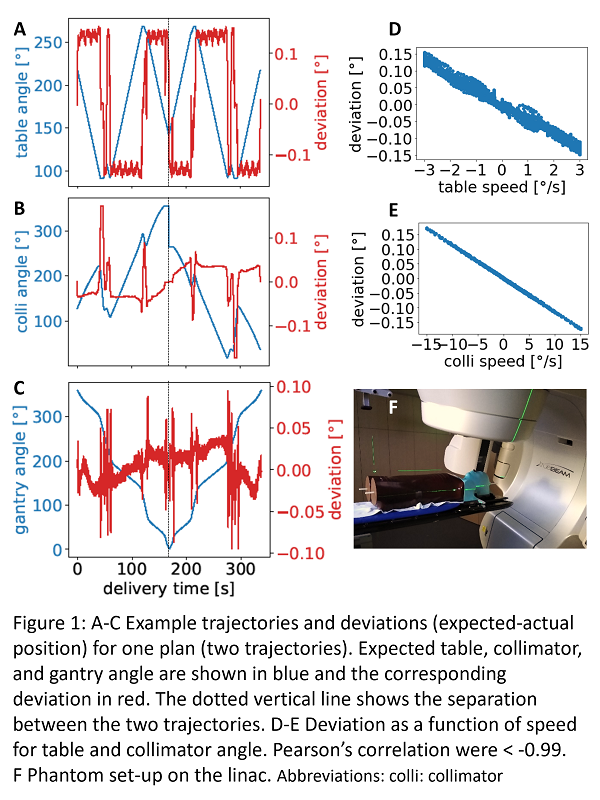All plans were delivered successfully
without interlock or collision.
The mean delivery time was 2.4 minutes
(range: 1.9-2.9 minutes) per trajectory. The root-mean-square (RMS) deviation were
0.02°, 0.12° and 0.03° for gantry, table and collimator angles, respectively. Maximum
deviations were 0.13°, 0.16° and 0.17° for gantry, table and collimator angles,
respectively.
The Pearson’s correlation coefficient
between speed and deviation was high (negative) for table and collimator angles (<-0.99, p<<0.01)
but low for gantry angle (0.16, p<<0.01). Figure 1 shows example trajectories
and deviations for gantry, table and collimator angles for one plan. Although
gantry angle deviations appear higher when there is a change in direction for
table or collimator rotation, correlation between deviation and speed or
acceleration of any component was low.
The mean RMS deviation for all moving MLC
leaves was 0.17 mm (maximum RMS deviation: 0.27 mm).
The passing rates between measured dose on film and calculated dose were 93.9% and 95.8% (global gamma, 2%/2mm, 10% dose threshold).
